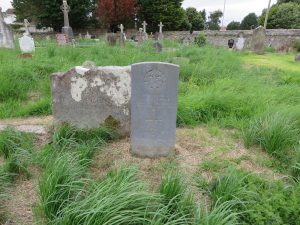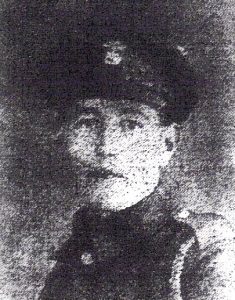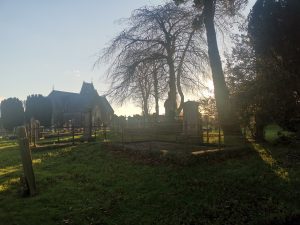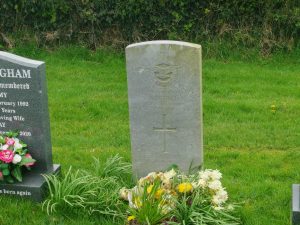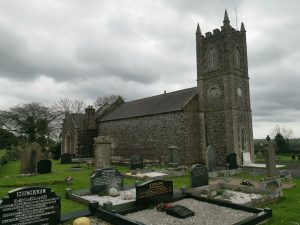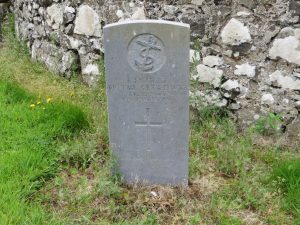Smyth, R A (Ross Acheson)

Remembrance Day 2021 website Launch
Major (Lieutenant Colonel) Ross Acheson Smyth was the son of J. A. Smyth; husband of Edith Smyth, of Dunmore, who he married on the 11th February 1892. They lived in Ardmore, Londonderry. He had one son and a daughter.
Ross Smyth was born on the 3rd of September 1862 and had originally joined the army on the 23rd of May 1885. He received his baptism of fire during the Chin Lushai Expedition of 1889-90[1].
During 1900 Ross went to South Africa and served with the mounted infantry, here he was slightly wounded, mentioned in dispatches, and promoted to Major. He would retire in 1903 on half-pay.
On the formation of the 36th Ulster Division during September 1914, Major Smyth was given command of the 10th (Derry) Inniskilling Fusiliers with the temporary rank of Lieutenant Colonel. Around the same time, his only son Second-Lieutenant John Ross Smyth of the 3rd Battalion of the Royal Irish Regiment, who was only 18, arrived in France to serve and be attached to “B” Company of the 2nd Battalion in France from the 17th of September.
A month later, during the 19th of October the battalion seized the village of Le Pilly[2]. Success was short lived, and they were soon surrounded by the Germans. No support was coming and from 904 men who arrived there on the 19th by the 20th, only 136 were left, they had been held in reserve. Ross Acheson Smyth lost his son on that day. He was buried in a mass grave with at least 170 other soldiers of the 2nd Royal Irish Regiment. They still have not been located to this day.
A year later Lieutenant Colonel Ross Smyth landed in France with his battalion on the 6th of October 1915 at 8:30. There were 1029 men, all ranks.
At 14.00 on the 6th of October the 10th Inniskillings went on a route march with their band from Boulogne, arriving at 10.00 the following day at Gare Central station[3] where they entrained and travelled to Coisy[4] and were billeted. At this point they started training and improving where they slept. Soon though they were on the move again and were eventually attached to other battalions at Hebuterne[5] to help them gain some experience in trench warfare.
Training continued, and the battalion marched from area to area. When the time came to celebrate the “Closing of the Gates of Londonderry (December 1668)”, the battalion still had no casualties or real front-line experience.
During March, they went to Forceville[6] and the trenches at Thiepval Woods[7] where they relieved the 9th Royal Inniskilling Fusiliers and started receiving their first casualties. This continued into April up until May when they moved to Léalvillers[8] The battalion remained here until mid-June when they moved back to Forceville and the Thiepval Woods area.
On the evening of the 30th of June 1916, the battalion moved forward to take up their positions at Thiepval Woods. Whilst walking through Aveluy Woods[9] towards the trenches the Lieutenant Colonel Ross Smyth slipped and sprained his leg and was evacuated. He was removed from the front line by ambulance just before the slaughter and returned to England.
The following June, whilst still in England, Lieutenant Colonel Ross Smyth, fell off his horse injuring himself again. He then transferred back to Ireland and to the 3rd Inniskillings.
Whilst home in Londonderry he was unfortunately involved in a cart accident in the city. He fractured the base of his skull in a fall from it and died the next day on the 27th of September 1917. He was buried with full military honours the next day.
Ross Smyth was awarded the Chin Lushai medal with clasp, Queen’s South African medal with six clasps, the 1914/15 Star, the British War and Victory Medals.
Date of Death: 27/09/1917 (Aged 55)
Service: Major, Lieutenant Colonel, Royal Inniskilling Fusiliers, 10th, 12th, and 3rd.
Burial Location: Glendermott Church of Ireland Churchyard and New Cemetery, New ground. D. 89.
[1] Chin Lushai Expedition of 1889-90 was launched into the Chin and Mizo Hills. It was intended to bring the whole area under the British control and to construct a road from India to Burma.
[2] Le Pilly is a small Hamlet in northern France. The battle decimated the Irish Fusiliers, from 904 men only 136 were left at the end after the Germans surrounded them. The dead have no known burial.
[3] Gare Central station is around 16 miles south of Boulogne.
[4] Coisy is around 60 miles, southeast of Gare Central station.
[5] Hebuterne is an area in France around 20 miles northeast of Coisy.
[6] Forceville in an area in France in between Thiepval Woods and Léalvillers.
[7] Thiepval Woods is around 6 miles south of Hebuterne.
[8] Léalvillers is an area in France around 7 miles east of Thiepval.
[9] Woods just west of Thiepval Woods.
